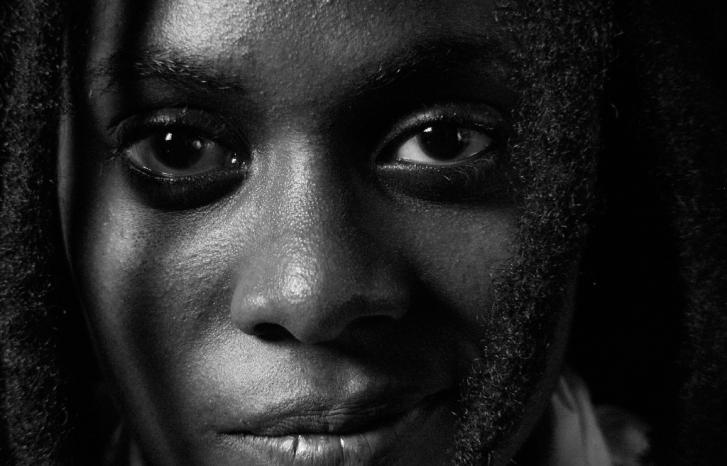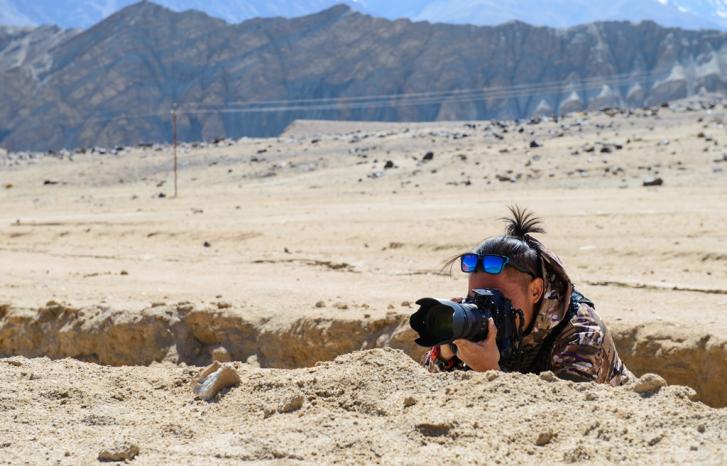“We must not be blinded by the image of the naive jihadist bride, this is about so much more than that,” says professor of Middle Eastern Studies at University of Oslo Brynjar Lia.
He has studied the existent research on the approximately thousand women who have left Europe in order to join the Islamic State of Iraq and Syria (ISIS). In his article, which was recently published in the journal Nytt norsk tidsskrift, Lia explores how the women were recruited to the Caliphate and what roles they were assigned when they arrived.
In contrast to the common media representations of the women as being tricked or lured into travelling, the article emphasises the women’s strong will and their desire to participate actively as central factors.
“The ideological aspect was important for many of those who went. This was not just about women who became part of something that they did not understand the extent of. To many, idealism and a strong desire to help Muslims in Syria were their main reasons for going,” says Lia.
But among the foreign fighters, the men seem to have more experience with drugs and crime than the women have.
The Islamic State was established during the Syrian civil war, and it attracted approximately 40.000 supporters from all over the world. When the extreme Islamist organisation declared the Caliphate as re-established in 2014, it saw an exceptional flocking of female sympathisers. To many of these, their engagement was about self-realisation as well as ideological conviction, according to Lia.
“There was a certain historical excitement to ISIS’ activities, and they experienced enormous military progress in some periods. Many of those who went there did so because they wanted to participate in what would come down in the history books as what they thought would be the first true Islamic state,” says the professor.
Muffins and self-sacrifice
Most of the women who left Europe were very young, often in their late teens or early twenties. The fact that they grew up with the war on terror and the consequential stigmatisation of Muslims in Europe has probably contributed to shaping the way in which they experience the western media coverage of ISIS, according to Lia.

“The Caliphate was a territory about the size of the United Kingdom, with eight to ten million people when it was at its greatest. The propaganda presented a story in which ISIS erased the borders previously drawn by the colonial powers,” he says.
“It is not that strange that young, susceptible people were swept away by this. Many believed western media always painted a gloomy picture of Muslims.”
The young women followed ISIS via their own media channels, particularly by communicating with other women who had already arrived in the Caliphate. Through networks of friends and social media, they got a more or less realistic impression of the everyday life inside the Caliphate.
“Some created a romantic image in which they posted pictures of villas with swimming pools, new clothes and scenes depicting muffin baking sessions with the children. Others were brutally honest about life’s harsh realities but described an experience of sisterhood and solidarity in the struggle and self-sacrifice,” says Lia.
He believes that both the romanticised and the unfiltered messages had a motivating effect on the women, and that the idea of being part of something greater than themselves was a strong motivational factor.
As a main rule, women were responsible for recruiting other women. At the same time, online dating was organised in order to help women meet and chat with foreign fighters whom they could later marry in Syria or Iraq. Adventurousness and love also played their parts in the women’s decisions to leave Europe. ISIS highly prioritised the recruitment of women and facilitated for them.
People from troubled homes are overrepresented in the statistics of those who went to Syria and Iraq.
“The reason behind why surprisingly many women went is that it was made possible for them. Communities offered help to facilitate for their journey, there was a comprehensive apparatus in work to receive them, and crossing the border was relatively easy,” says Lia.
For many women, a significant factor was also that they wanted to get away from something. Joining ISIS became a sort of escapism for some of them, according to Lia.
“People from troubled homes are overrepresented in the statistics of those who went to Syria and Iraq. Foreign fighters generally score high on factors indicating social exclusion,” says Lia.
“But among the foreign fighters, the men seem to have more experience with drugs and crime than the women have.”
“Men less ideologically motivated”
Social exclusion is a recurrent theme in the stories that David Hansen hears when he interviews previous foreign fighters. As a researcher at the University College of Norwegian Correctional Service (KRUS), he visits Norwegian prisons in order to talk to people who have been convicted after having joined ISIS in Syria and Iraq.

Their stories include troubled homes and problems at school, drugs, psychiatric disorders and involvement in various crimes. He characterises their ideological reasons for joining ISIS as poor.
“To begin with, they give some statements about defending Islam and the prophet’s honour, but this is a superficial approach to a politicalised religion. They have been looking for an extreme community and found one that was accessible to them,” says Hansen.
According to him, the radicalisation process seems to have happened very quickly. Through manipulation from leading figures, it has sometimes taken less than three months from the time they joined the extremist community in Norway until they were on their way. This quick and superficial approach differs from the women’s radicalisation process.
“The women seemed much more ideologically motivated then they left Norway. They had specific plans about state building, about creating a nation, and they planned several generations ahead,” he says.
“The men I have spoken to went there to die. They did not think they would return to Norway,” he says.
When they finally returned home, it was because they were weary and disillusioned after having witnessed the war at close range, lost friends and gone through traumatic experiences, says Hansen. He thinks the fact that fewer women have returned home is because it was easier for men to get out. Furthermore, he believes that the women do not want to risk the long prison sentences that the men have received after their return to their home country.
“Several of the male foreign fighters that have returned home are serving prison sentences of approximately seven years. These sentences are much longer than what foreign fighters have got previously, and this makes the women reluctant to go home,” says Hansen.
Women behind the barricades
Within the Caliphate’s gender segregated society, men and women were assigned very different tasks. Although there were pictures of women carrying weapons among ISIS’ propaganda material, most of the female sympathisers understood that they would not be in the front line, according to Brynjar Lia at University of Oslo.
“There are studies that strongly suggest that women were active in the front line, and video material of women running around with machine guns does exist,” he says.
“But several experts have argued that this was made in order to make men feel ashamed: ‘Here women have to fight while you are sitting at home watching’. It is possible that the pictures were spread for this purpose.”
As the military pressure against ISIS became stronger, women increasingly began to participate in the fights, for instance as suicide bombers. They were able to reach other targets than the men. The fact that women participated in the war was theologically legitimate when it was absolutely necessary,” Lia explains.
But most of the women spent their time giving birth and raising children, a strategically important job in the organisation, as well as cooking, housework and other practical matters.
Most of the women spent their time giving birth and raising children, a strategically important job in the organisation.
ISIS desperately needed to recruit women to the Caliphate, both to be able to produce a new generation of warriors and to have people who could work within the education and health services and take on bureaucratic and legislative positions.
Within a society in which men were not allowed to conduct a search on woman, it became important to have female police officers for security reasons, since there have been attacks at checkpoints where men have disguised themselves as women with niqabs. A female police force that prosecuted women who had broken the rules was established.
“There are anecdotal reports about women who were involved in corporal punishment of other women. I do not know how systematic it was, but several women have said that they participated in this. It was probably a marginal part of the women in the Caliphate,” says Lia.
The main function for many of the women who came from Europe was to be a mother and wife. Several of them did not speak Arabic and were therefore unable to work within the education system or other administrative positions.
“Those who were unmarried were lodged in separate guesthouses and were expected to find themselves a husband within a certain amount of time. If they were widowed, which they easily became, they were expected to remarry,” says Lia.
Back to society
During the past months, there has been an intense debate concerning whether we should help women who joined ISIS and their children to return to Norway. Brynjar Lia at University of Oslo is critical to the representation of these women as ‘incurable monsters’ and ‘ticking bombs’.
“I think this language is dehumanising. We need to think in terms of care and rehabilitation in addition to punishment, as we cannot rehabilitate a ticking bomb. A bomb can only be dismantled,” he says.
Hansen at KRUS is also concerned on behalf of the men who have returned. Some of them will soon be out of prison and are coming back into Norwegian society.
“They are terrified of getting out, in case someone will recognise them. They are regarded as murderers although they are not convicted for any violent crimes. But they are not bad people, they need care,” he says.
Translated by Cathinka Dahl Hambro.
- Brynjar Lia at University of Oslo has written the article “Muhajirat-fenomenet: Hvordan ble kvinner fra Europa rekruttert til ISIL, og hva var deres rolle i Kalifatet?” (‘The Muhajirat phenomenon: How were women from Europe recruited to ISIL, and what was their role in the Caliphate?’), which was published in the Norwegian journal Nytt norsk tidsskrift earlier this year.
- The article argues that ideology, strong will and self-realisation were important contributing factors for the women who joined IS.
- According to David Hansen at University College of Norwegian Correctional Service (KRUS), the women who joined IS emphasised ideological conviction more than the men did.
- Male foreign fighters seem to have more experience with drugs and crime than the female fighters, according to Lia’s article.



